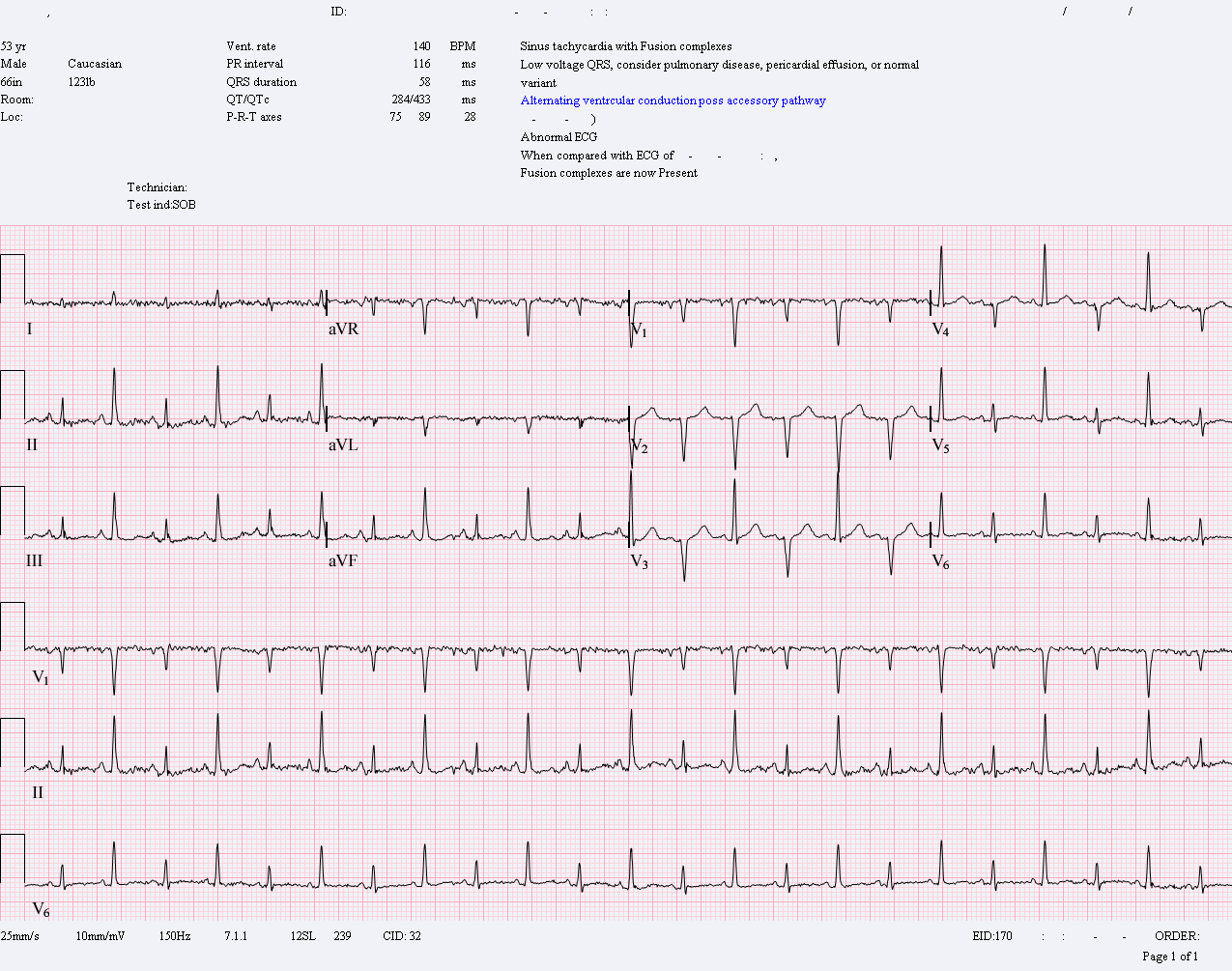Cardiac Tamponade
Introduction
Cardiac tamponade occurs when fluid in the pericardial sac exceeds the normal filling pressure of the heart and impairs cardiac output. Cardiac tamponade is relatively uncommon. Estimates approximate 2 cases per 10,000 in the Unites States, yearly.
Pathophysiology
The outer layer of the heart (pericardium) is thick, fibrous and does not easily stretch. As fluid begins to accumulate in the pericardial space, increased pressure is exerted upon the heart. When this pressure exceeds the filling pressure of the right ventricle, filling is impaired. Increased pressure eventually causes the septum to bow toward the left ventricle, which then impairs systole and causes a drop in cardiac output. Causes of cardiac tamponade include: physical trauma, pericarditis, iatrogenic, malignancy, myocardial rupture and hypothyroidism.
Signs and Symptoms
Classically you will see Beck’s Triad: muffled heart sounds, jugular venous distention and hypotension. Complaints of dyspnea, palpitations, chest discomfort, and decreased exercise tolerance are common. Right upper quadrant pain as a result of hepatic congestion may also be part of the presentation.
Diagnosis
EKG: classically, a beat to beat variation in the amplitude of P and R waves is found, referred to as electrical alternans. However, this is actually found in only 20% of cases. On EKG you may also see decreased amplitude of the QRS complex.
CXR: may show an enlarged heart.
Echo: diagnostic test of choice. This can be done at bedside to expedite a rapid diagnosis.
Pulsus Paradoxus: a decrease in systolic blood pressure >10mm Hg with inspiration. There is normal variation in systolic blood pressure with inspiration but normal is a systolic blood pressure decrease <10mmHg. If the decrease is greater than 10mmHg it can help clue you in to cardiac tamponade.
Treatment and Management
-
Give normal saline boluses to augment right ventricle filling pressures and temporarily improve hemodynamics.
-
If vital signs are unstable, definitive therapy is an emergent pericardiocentesis. You can administer peripheral vasopressors while you prepare for the pericardiocentesis.
- Disposition: will need admission to an ICU for close observation and further interventions (catheter insertion, pericardial window, etc).
References
-
Wikipedia: https://en.m.wikipedia.org/wiki/Cardiac_tamponade
- Tintinalli’s: Chapter 24. 7th edition




